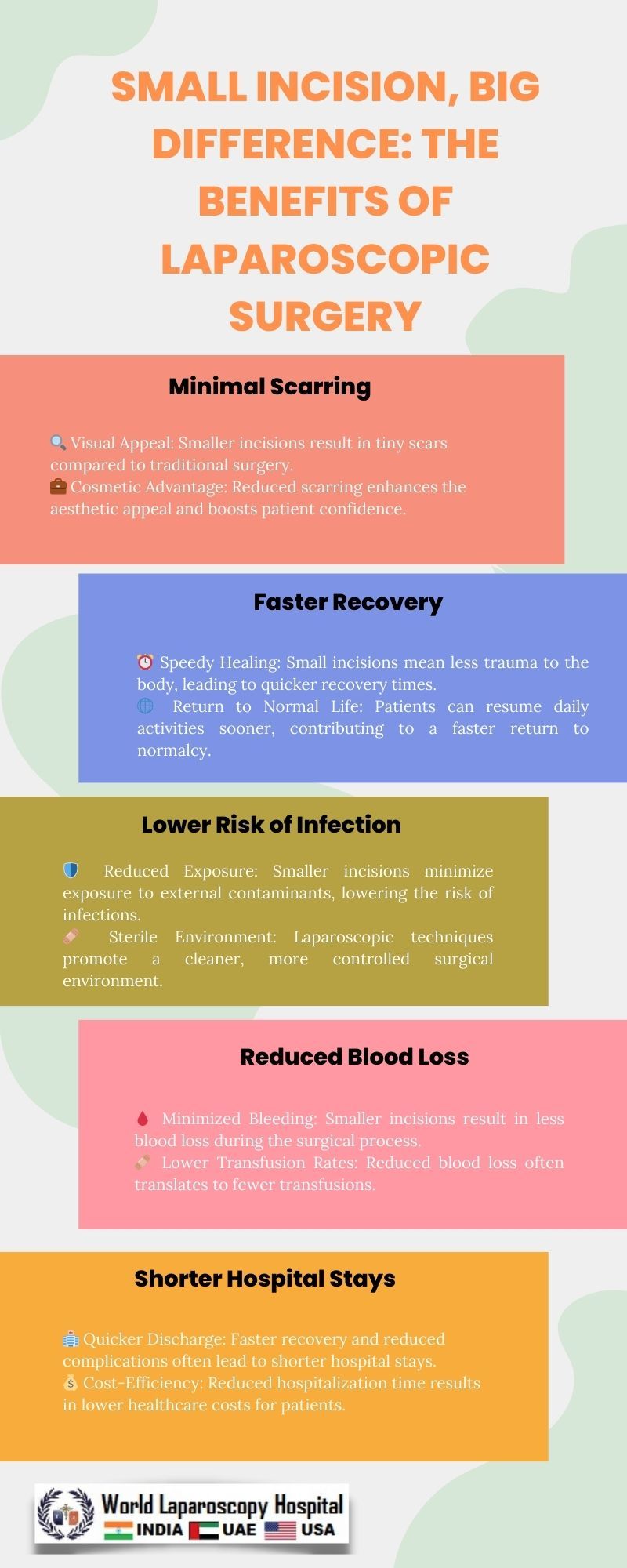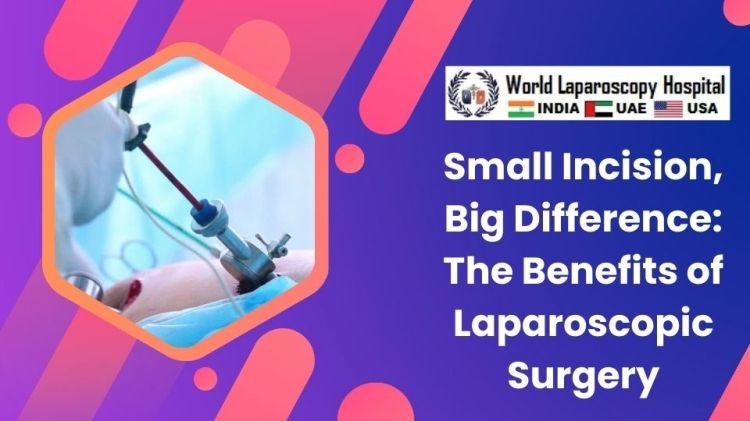Introduction:
In the ever-evolving landscape of medical advancements, laparoscopic surgery has emerged as a transformative technique, revolutionizing the way various surgical procedures are performed. Characterized by small incisions and the utilization of a camera-equipped scope, laparoscopic surgery, also known as minimally invasive surgery, has proven to be a game-changer in enhancing patient outcomes. This article delves into the multifaceted benefits of laparoscopic surgery, exploring how its minimalistic approach has redefined the surgical experience across diverse medical disciplines.

Traditional open surgeries, with large incisions exposing the internal organs, were once the standard approach to various medical procedures. While effective, these methods often led to prolonged recovery times, increased postoperative pain, and a higher risk of complications such as infections. The advent of laparoscopic surgery marked a paradigm shift in surgical techniques, introducing a less invasive method that offers numerous advantages.
Minimal Incisions, Maximum Results:The hallmark of laparoscopic surgery lies in its small incisions, typically ranging from 0.5 to 1.5 centimeters. These incisions serve as entry points for specialized instruments and a camera-equipped scope, allowing surgeons to visualize and manipulate internal organs with precision. Compared to the large incisions required in open surgeries, the minimalistic approach of laparoscopic surgery results in reduced trauma to the surrounding tissues, contributing to a host of benefits for patients.
Reduced Postoperative Pain:One of the most significant advantages of laparoscopic surgery is the considerable reduction in postoperative pain experienced by patients. Smaller incisions mean less damage to nerves and muscle tissues, leading to diminished pain and discomfort during the recovery period. This aspect not only improves the overall patient experience but also contributes to faster recovery and earlier mobility.
Quicker Recovery Times:The minimally invasive nature of laparoscopic surgery translates into faster recovery times compared to traditional open procedures. With smaller incisions, patients typically experience less trauma to the body, allowing them to resume their normal activities sooner. Shorter hospital stays are often a direct result of the swift recovery associated with laparoscopic surgery, minimizing the overall impact on the patient's daily life.
Cosmetic Benefits:Beyond the medical advantages, laparoscopic surgery offers cosmetic benefits by minimizing scarring. The tiny incisions used in laparoscopic procedures result in smaller, more discreet scars compared to the larger, more visible scars associated with open surgeries. This aesthetic aspect can significantly improve patients' satisfaction with their overall surgical experience.
Lower Infection Risks:The risk of postoperative infections is a concern in any surgical procedure. Laparoscopic surgery mitigates this risk by minimizing exposure of internal organs to the external environment. The smaller incisions and reduced handling of tissues contribute to a lower likelihood of infections, fostering a safer surgical environment for patients.
Enhanced Visualization and Precision:Laparoscopic surgery employs a camera-equipped scope, providing surgeons with a magnified and illuminated view of the surgical site. This enhanced visualization allows for greater precision in manipulating tissues and performing intricate procedures. Surgeons can navigate with accuracy, leading to improved outcomes and reduced risks of inadvertent damage to surrounding structures.
Versatility Across Specialties:The benefits of laparoscopic surgery extend across a wide range of medical specialties. From gynecology and urology to gastroenterology and orthopedics, the minimally invasive approach has proven its efficacy in diverse surgical procedures. Laparoscopic techniques are continually evolving and are now applied in areas such as cardiac surgery, demonstrating the versatility of this transformative surgical approach.
Reduced Blood Loss:Compared to traditional open surgeries, laparoscopic procedures are associated with reduced blood loss. The precision afforded by specialized instruments and the minimally invasive nature of the technique contribute to this advantage. Lower blood loss not only minimizes the need for blood transfusions but also reduces the overall stress on the patient's body during surgery.
Cost-Efficiency and Healthcare Resource Utilization:While the initial costs of laparoscopic equipment and training may be higher, the overall cost-effectiveness of laparoscopic surgery becomes apparent when considering factors such as reduced hospital stays and quicker recovery times. Additionally, the decreased incidence of complications and lower postoperative care requirements contribute to optimal healthcare resource utilization.
Patient Satisfaction and Quality of Life:The combination of reduced pain, quicker recovery, and cosmetic benefits leads to higher levels of patient satisfaction with laparoscopic surgery. Patients often report a better overall quality of life post-surgery, as the minimal invasiveness of the procedure allows them to return to their regular activities with minimal disruption.
Challenges and Considerations:While the benefits of laparoscopic surgery are substantial, it is crucial to acknowledge the challenges associated with this technique. Surgeons require specialized training to master laparoscopic skills, and not all procedures are suitable for a minimally invasive approach. Additionally, equipment costs and the learning curve associated with adopting laparoscopic techniques are considerations that medical institutions must address.
Future Trends and Innovations:The field of laparoscopic surgery continues to evolve with ongoing advancements and innovations. Robotics-assisted laparoscopy, virtual reality training, and augmented reality visualization are emerging technologies that promise to further enhance the precision and capabilities of laparoscopic procedures. As technology progresses, the potential for even more refined and specialized minimally invasive surgeries becomes increasingly promising.
Conclusion:
Laparoscopic surgery has undeniably ushered in a new era of surgical care, offering a plethora of benefits that extend beyond the operating room. From reduced postoperative pain and quicker recovery times to enhanced precision and versatility across medical specialties, the impact of laparoscopic surgery on patient outcomes is profound. As technology and techniques continue to advance, the future holds even greater promise for the widespread adoption and refinement of minimally invasive approaches, solidifying laparoscopic surgery as a cornerstone of modern surgical practice.






